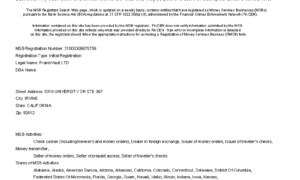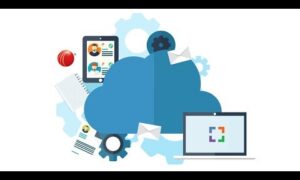Introduction
Launching a new business is an exciting venture, but success requires careful planning and consideration of various factors. Setting up a business involves navigating a complex landscape that encompasses legal, financial, and operational aspects. In this comprehensive guide, we will explore the crucial factors entrepreneurs need to consider before embarking on their entrepreneurial journey. By understanding and strategically addressing these elements, you can pave the way for a resilient and thriving business.
Factors to Consider Before Setting Up Your Business
1. Market research and analysis:
A. Target Audience: Identify and understand your potential customers. Know their needs, preferences, and behaviors to tailor your products or services effectively.
B. Industry Trends: Stay abreast of current trends in your industry. Analyze market dynamics, emerging technologies, and shifts in consumer behavior to position your business strategically.
C. Competitor Analysis: Study your competitors to identify their strengths, weaknesses, and market positioning. This analysis can help you differentiate your business and find unique value propositions.
2. Business Plan Development:
A. Goal Setting: Clearly define your short-term and long-term business goals. This provides a roadmap for decision-making and helps measure your progress over time.
B. Financial Projections: Develop realistic financial projections, including revenue forecasts, expense estimates, and break-even analysis. This is crucial for securing funding and managing resources effectively.
C. Operational Plan: Outline the day-to-day operations of your business. Define roles, responsibilities, and processes to ensure smooth functioning.
3. Legal Considerations:
A. Legal Structure: Choose an appropriate legal structure for your business, such as a sole proprietorship, partnership, LLC, or corporation. Each structure has different legal implications and tax obligations.
B. Regulatory Compliance: Research and comply with local, state, and federal regulations. Obtain the necessary licenses, permits, and certifications to operate legally.
C. Contracts and Agreements: Establish clear contracts with suppliers, partners, and customers. Consult legal professionals to draft agreements that protect your interests.
4. Financial Planning and Budgeting:
A. Startup Costs: Identify and account for all initial expenses, including equipment, licenses, permits, and marketing.
B. Cash Flow Management: Monitor and manage your cash flow effectively. Have contingency plans for slow periods and unexpected expenses.
C. Funding Options: Explore various funding options, such as loans, investors, grants, or crowdfunding. Choose the option that aligns with your business model and growth plans.
5. Technology and Infrastructure:
A. Digital Presence:
1. Website Development: Invest in a well-designed and user-friendly website. It serves as the digital storefront for your business and is often the first point of contact for potential customers.
2. E-commerce Capabilities: If applicable, incorporate e-commerce functionality into your website. This allows customers to make online purchases, expanding your reach and accessibility.
3. Mobile Optimization: Ensure that your website is optimized for mobile devices. With the increasing use of smartphones, a mobile-friendly site is essential for reaching a broader audience.
B. IT Security:
1. Data Protection: Implement robust data protection measures to safeguard sensitive information, both yours and your customers’. This includes encryption, secure payment gateways, and regular data backups.
2. Firewalls and Antivirus Software: Install firewalls and reliable antivirus software to protect your business from cyber threats. Regularly update these tools to stay ahead of potential vulnerabilities.
3. Employee Training: Educate your team about cybersecurity best practices. Human error is a common factor in security breaches, so ensuring that your staff is well-informed can mitigate risks.
C. Collaboration Tools:
1. Communication Platforms: Choose effective communication tools for your team, such as messaging apps, video conferencing, and project management software. These tools enhance collaboration, especially in remote or distributed work environments.
2. Cloud Services: Consider leveraging cloud services for storage, collaboration, and scalability. Cloud platforms provide flexibility and accessibility while reducing the need for extensive physical infrastructure.
D. Automation and Efficiency:
1. Business Process Automation: Identify opportunities to automate repetitive tasks and streamline business processes. This not only enhances efficiency but also reduces the likelihood of errors.
2. Customer Relationship Management (CRM): Implement a CRM system to manage interactions with customers. This technology helps track customer data, preferences, and interactions, enabling personalized and targeted marketing efforts.
E. Website analytics and SEO:
1. Analytics Tools: Utilize web analytics tools to track website performance, user behavior, and conversion rates. Insights from these tools can inform strategic decisions and optimize your online presence.
2. Search Engine Optimization (SEO): Implement SEO strategies to improve your website’s visibility in search engine results. This includes optimizing content, using relevant keywords, and ensuring technical aspects of your site are SEO-friendly.
6. Human Resources and Talent Acquisition:
A. Organizational Structure: Define your organizational structure, including reporting lines and departmental responsibilities. Clarify roles and expectations to foster a productive work environment.
B. Recruitment Strategy: Develop a comprehensive recruitment strategy to attract qualified individuals. Consider cultural fit, skills, and experience when building your team.
C. Employee Development: Invest in training and development programs to enhance the skills of your workforce. Foster a culture of continuous learning and growth.
7. Marketing and Branding Strategies:
A. Unique Selling Proposition (USP): Clearly articulate what sets your business apart from competitors. Highlight your USP in marketing materials to attract customers.
B. Digital Marketing: Embrace digital marketing channels, including social media, content marketing, and search engine optimization (SEO). Create a consistent and compelling online presence.
C. Brand Identity: Develop a strong and memorable brand identity. Consistent branding across all channels helps build brand recognition and trust among consumers.
Conclusion
Setting up a business requires a holistic approach that takes into account a myriad of factors. By conducting thorough research, developing a comprehensive plan, and addressing legal, financial, and operational considerations, you can position your business for long-term success. Remember, the key to a thriving business is not just the product or service you offer, but the strategic foundation on which it stands. With careful planning and a proactive mindset, you can navigate the complexities of entrepreneurship and build a business that stands the test of time.

































